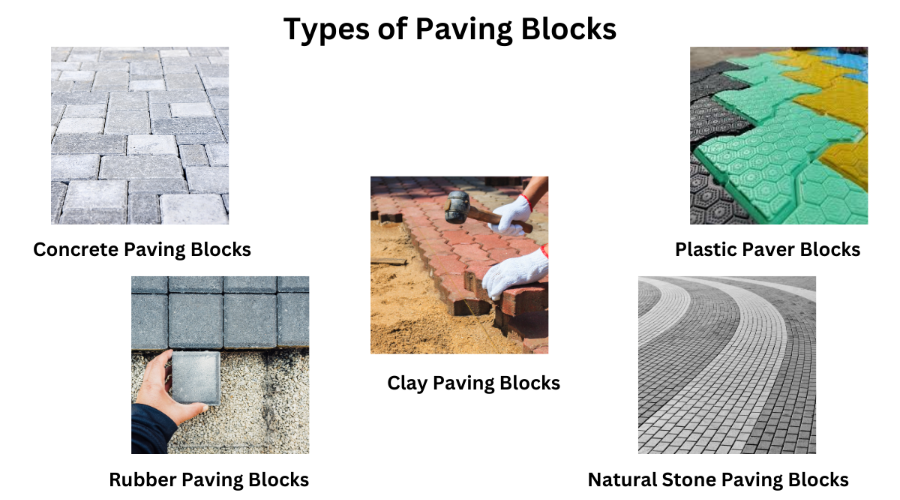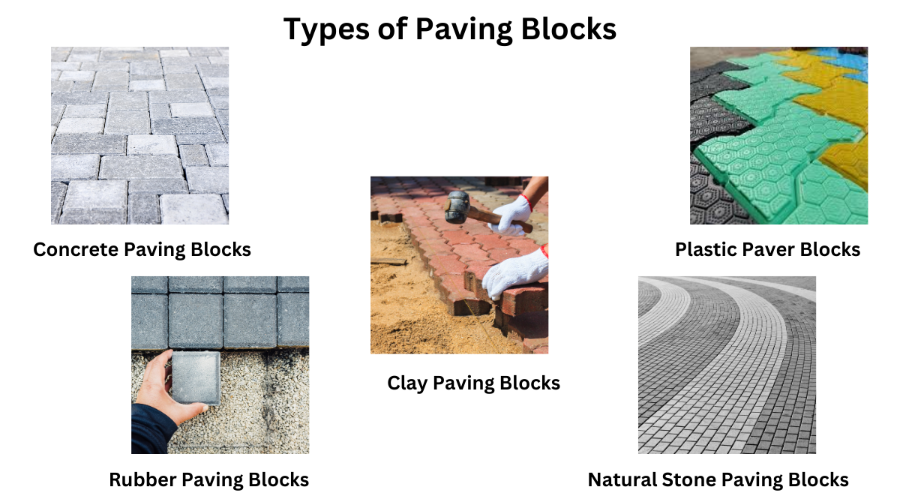In recent years, paving blocks have been helpful in many ways for levelling a variety of surfaces. They evenly level the platforms for smooth movement of vehicles as well as giving a trouble-free walking experience for pedestrians. While building new homes or structures, parking areas and other outdoor spaces can be filled with these blocks to provide smooth transitions.
In this Brick & Bolt article, you will understand the benefits of paving blocks, their types, applications and other essential features. You can make your own decision on whether installing paving blocks for your house or business spaces is good for your small, worthy investment.
What Are Paving Blocks?
Paver blocks, or paving blocks, are solid, durable pieces of clay, stone, or concrete. Among all, the most common type of paver is concrete. This is designed to interlock firmly for stability. Other materials, including natural stone, clay, and porcelain, offer different durability and appearance.
Sand is employed to pack the spaces among these blocks so that they can remain stable once placed over a gravel or sand base. They create durable, long-lasting surfaces for outdoor spaces, paths, and roads.
Benefits of Paving Blocks
Several benefits of paving blocks are as follows:
- Top-quality materials are used to make paver blocks in a factory, which makes them strong and durable.
- They never buckle or crack, even at extremely high temperatures, and they keep their surface even.
- The surface is ready to use as soon as it’s installed since they don’t have to cure like poured concrete does. Individual blocks can be replaced without damaging the whole pavement in case subterranean repairs need to be done.
- They are also low maintenance as they do not stain with petrol or oil.
- They appear clean after regular sweeping, weeding, and sanding of joints.
- With their colour, shape, and texture variation, paver blocks are also very creatively flexible.
- They are a functional and stylish alternative as they have unique patterns that can easily be adjusted in the future.
Types of Paving Blocks

Several types of paving blocks are discussed here, which give high flexibility and best results.
Concrete Paving Blocks
Install these blocks in your outdoor area for their strength and longevity. Moulds can be used to create uniform blocks for simple installation. The two varieties that can be used to pave outdoor spaces are interlocking and non-interlocking. Driveways and patios can be built using these blocks for their heavy use.
Clay Paving Blocks
Clay blocks are used in garden areas and driveways for their sturdiness and long-lasting quality. It is widely used for decorative purposes rather than commercial spaces. As they are originally from mud soil, they are known for their pure colour and don’t fade as painted bricks do over time.
Plastic Paver Blocks
Plastic paver blocks are manufactured from recycled plastics to reduce waste. They are waterproof and are available at affordable prices. Any landscape can be made more decorative with a wide variety of colours. They are less resistant and suitable for low-traffic areas.
Rubber Paving Blocks
Rubber paving blocks use recycled rubber materials like tyre waste and other items. They are highly resistant and ideal for playgrounds and high-traffic areas. They are waterproof and slip-resistant and come in brilliant hues to decorate any landscape.
Natural Stone Paving Blocks
Natural stone paving blocks are cut from natural stone, offering a luxurious and durable finish. They resist wear, handle heavy traffic, and maintain beauty for decades, though they cost more than plastic or concrete.
Applications of Paving Blocks
Paving blocks support different kinds of applications as follows.
Driveways:
They provide a durable surface and can accommodate heavy loads of large vehicles.
Walkways and pathways:
Give pedestrians a flat, non-slip surface.
Patios & Gardens:
The outdoor space can be enhanced with customisable designs.
Parking lots:
Provide vehicles with strong, durable surfaces.
Public Areas:
This substance can be used on sidewalks, plazas, and parks, as it is resistant and has a great look.
Industrial Areas:
Efficiently handle heavy traffic and heavy equipment.
Installation Process
Installing paving blocks correctly ensures a strong, long-lasting surface.
Site Preparation
Excavating and compacting the ground to produce a sturdy base is the first step in the procedure. Any weak soil is removed and replaced to prevent sinking.
Base Installation
A base layer of gravel or crushed stone is then applied and compacted to increase stability. To prepare the surface for paver placement, a thin coating of sand is then evenly placed.
Paver Installation
Paver installation follows, where blocks are placed in a planned pattern. They are tapped into position with a rubber mallet to guarantee a snug fit. After sweeping joint sand into the spaces, everything is secured with a compactor.
Edge Restraints and Sealer Protection
Edge restraints are added to prevent shifting, and finally, a sealer can be applied for extra protection. Once completed, the area should be left undisturbed for proper settling.
Types of Paver Block Patterns

Blocks can be installed in outdoor walking areas, terraces, courtyards, short street roads, and parking lots, which are available in different patterns. For each purpose, you have to choose the right pattern for its long-lasting strength. Here are some common patterns of paver blocks:
Herringbone Pattern
This type of interlocking pattern serves well in warehouses, parking spaces in residential and industrial zones and small street roads where car flow demands more support and durability.
Basketweave Pattern
This resembles woven material formed by alternating block pieces in an over-and-under manner. It provides a peculiar look and is suitable for verandas, courtyards, and walkways.
Running Bond Pattern
Pavers are arranged in zigzag rows, similar to the way bricks are stacked on a building. This is such a simple yet firm design that provides an elegant appearance, best suited for paths and driveways.
Cobblestone Pattern
With unevenly shaped stones, this design produces a natural, old-fashioned appeal. It’s ideal for rustic walkways and patios.
Circular Pattern
Pavers are arranged in circles or radiating spokes, adding elegance to gardens and focal areas.
Factors to Consider When Choosing Paving Blocks
Some essential factors you should consider when choosing paving stones for decorating your space are mentioned below.
| S.no | Location | Best Paver Types | Why Do These Work Best? |
| 1 | Driveways | Concrete, clay, and stone pavers. | Strong enough for cars, stays in place, and handles weight well. |
| 2 | Walkways | Concrete, clay, stone, and permeable pavers. | Safe to walk on (non-slippery), available in different shapes for design. |
| 3 | Pool Decks | Concrete, stone, and porcelain pavers. | Prevents slipping, fits well around pools, drains water easily. |
| 4 | Garden Paths | Concrete, stone, gravel, and grass pavers. | Allows water to pass through, giving a natural outdoor look. |
| 5 | Edging | Concrete, clay, stone pavers, and plastic edging. | Creates a neat border and keeps pavers from shifting. |
Conclusion
Paver blocks are a strong and adaptable option for patios, walks, driveways, and outdoor areas. We at Brick & Bolt will assist you in locating the ideal paving option for your requirements. Our knowledgeable staff offers advice on choosing the best paver blocks to guarantee both long-lasting functionality and visual appeal. With our premium materials and expert installation, you can design a beautiful and useful outdoor area. To realise your pavement concept, get in touch with Brick & Bolt right now.

